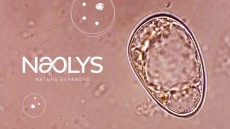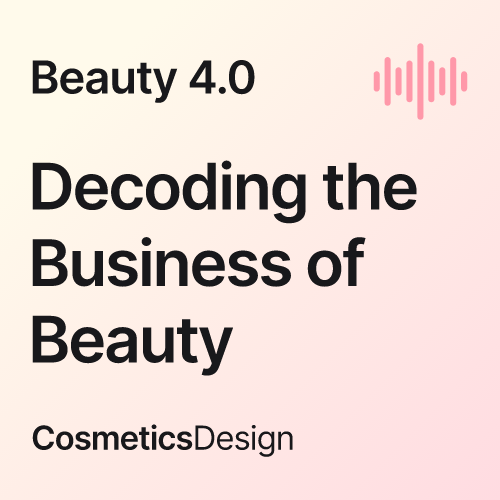Poor public perception remains biggest hurdle for CBD cosmetics in South Korea – expert

While cannabidiol (CBD) is not a new ingredient in the market, it has not sparked any major trends largely due to the deep-seated perception that “hemp is bad”.
“Korean society has a strong prejudice against cannabis, which is difficult to break. The local consumers need a lot of education on the efficacy of CBD and its benefits for the skin.
“That said, I would say the opportunity of growth is in skin care, and that is linked to well-being — not just physically but also in terms of the sleep improvement and calming effect,” Mike Sohn, CEO of regulatory consultancy REACH24H Korea, told CosmeticsDesign-Asia.
To shift consumer perception and increase adoption, Sohn believes that a “star brand” needs to open up the path.
“It definitely involves quite a risk [for the company], especially for big players in Korea. Furthermore, the ban in China, one of the biggest K-beauty export markets, has limited growth for Korean firms.
“We can look into the US as an alternative, but the market already has some competitive players that makes it challenging to penetrate. But if a good niche brand comes along with strategic marketing and consumer education, there is still potential for success in the future.”
Uncovering new potential
Gyeongsangbuk-do (North Gyeongsang Province) accounts for 60% of Korea’s hemp cultivation area.
In April, Gyeongsangbuk-do Agricultural Research and Extension Services’ Biological Resources Research Institute announced that it will commence joint research to “explore new avenues” for the hemp industry.
The institute had been in discussion with medical cannabis company Neocannbio, and thermal technology and lighting systems specialist Apack, regarding research direction and product development, among other focus areas.
The research aims to extract functional components from unused parts of hemp, specifically stems, roots and seeds, to analyse and evaluate their efficacy, with the goal of developing functional products such as food and cosmetics.
One of the plans is to study aeroponics cultivation conditions, such as setting appropriate light conditions to enhance functionality.
“Hemp refers to the dried leaves and flowers of the cannabis plant, and its roots and stems are not classified as drugs, so they are not subject to legal regulations.
“Hemp roots and stems contain components such as polyphenols and terpenoids, which are known to have anti-inflammatory, antioxidant, and anti-ageing effects. Products using these parts are already being produced overseas, including in the US, but only some related research has been conducted in Korea,” the organisation said.
In addition, previous research co-conducted by Gyeongsangbuk-do Institute of Health and Environment and Andong National University detected a high content of cannabinoids in the roots and stems of hemp.
“Through the upcoming research, the partnering companies will be able to continuously utilise skilled manpower as well as equipment and facilities for cultivation and processing.
“At the same time, the research institute is expected to revitalise the hemp industry through the development and commercialisation of various functional products that seek to create new consumption trends.”
![The recent trend developments in the APAC beauty market. [Lotus Herbals]](/var/wrbm_gb_food_pharma/storage/images/_aliases/wrbm_medium/publications/cosmetics/cosmeticsdesign-asia.com/headlines/market-trends/what-s-trending-top-stories-on-apac-beauty-market-and-consumer-insights4/17484703-1-eng-GB/What-s-trending-Top-stories-on-APAC-beauty-market-and-consumer-insights.jpg)








![Indus Valley is working to corner 30% of India's online premium boxed hair colour market. [Indus Valley]](/var/wrbm_gb_food_pharma/storage/images/_aliases/wrbm_tiny/publications/cosmetics/cosmeticsdesign-asia.com/article/2024/07/26/indus-valley-aims-to-secure-30-of-india-s-online-premium-hair-colour-market-with-organic-offerings/17594932-5-eng-GB/Indus-Valley-aims-to-secure-30-of-India-s-online-premium-hair-colour-market-with-organic-offerings.jpg)
![[Getty Images]](/var/wrbm_gb_food_pharma/storage/images/_aliases/wrbm_tiny/publications/cosmetics/cosmeticsdesign-asia.com/china/china-focus-latest-developments-in-china-s-booming-beauty-market25/17606695-1-eng-GB/China-focus-Latest-developments-in-China-s-booming-beauty-market.jpg)
![Kosé has launched makeup brand Visée in Singapore as part of plans to reinforce its position in SEA. [Visée]](/var/wrbm_gb_food_pharma/storage/images/_aliases/wrbm_tiny/publications/cosmetics/cosmeticsdesign-asia.com/headlines/business-financial/visee-singapore-kose-aims-to-enhance-brand-visibility-in-sea-with-new-launch/17587264-1-eng-GB/Visee-Singapore-Kose-aims-to-enhance-brand-visibility-in-SEA-with-new-launch.jpg)
![ble C&C is set on reinforcing its competitiveness in China’s beauty market. [Missha]](/var/wrbm_gb_food_pharma/storage/images/_aliases/wrbm_tiny/publications/cosmetics/cosmeticsdesign-asia.com/headlines/business-financial/able-c-c-aims-to-strengthen-competitiveness-in-china-through-online-expansion-kol-collabs/17591626-1-eng-GB/Able-C-C-aims-to-strengthen-competitiveness-in-China-through-online-expansion-KOL-collabs.jpg)

![LG H&H genetic study says 23 genetic regions affect natural skin tone. [Getty Images]](/var/wrbm_gb_food_pharma/storage/images/_aliases/wrbm_tiny/publications/cosmetics/cosmeticsdesign-asia.com/article/2024/07/23/lg-h-h-discovery-of-genetic-skin-tone-factors-in-east-asians-potentially-key-to-skin-radiance-developments/17587210-1-eng-GB/LG-H-H-discovery-of-genetic-skin-tone-factors-in-East-Asians-potentially-key-to-skin-radiance-developments.jpg)

![DR.CI:LABO expects brand-supplier partnerships gain more public prominence as consumers interest in skin care grows online. [Dr.Ci:Labo]](/var/wrbm_gb_food_pharma/storage/images/_aliases/wrbm_tiny/publications/cosmetics/cosmeticsdesign-asia.com/article/2024/07/22/brand-supplier-partnerships-will-come-to-the-fore-amid-the-online-skin-care-landscape-dr.ci-labo/17576755-1-eng-GB/Brand-supplier-partnerships-will-come-to-the-fore-amid-the-online-skin-care-landscape-DR.CI-LABO.png)


